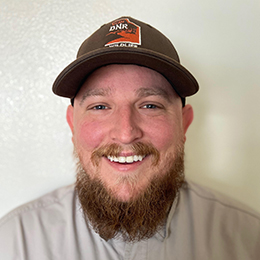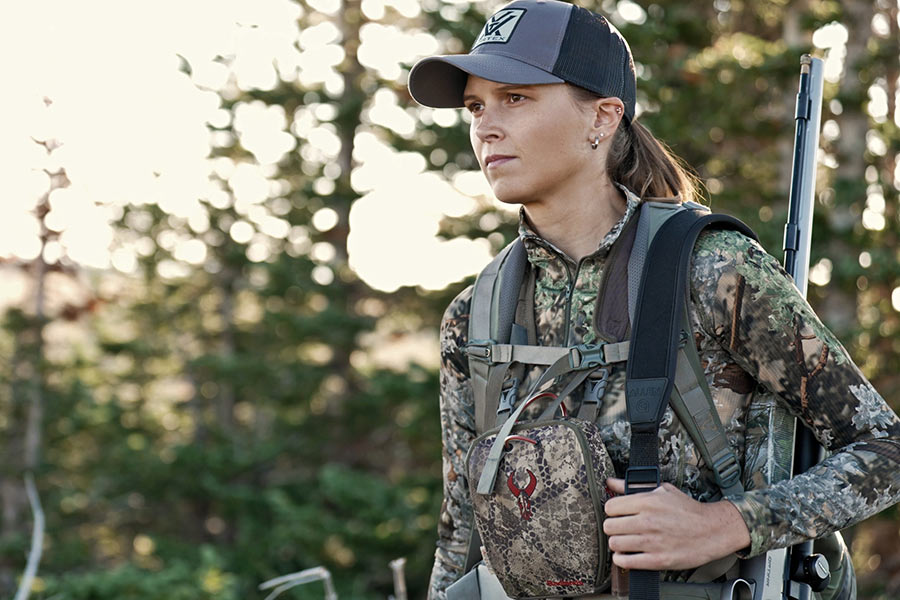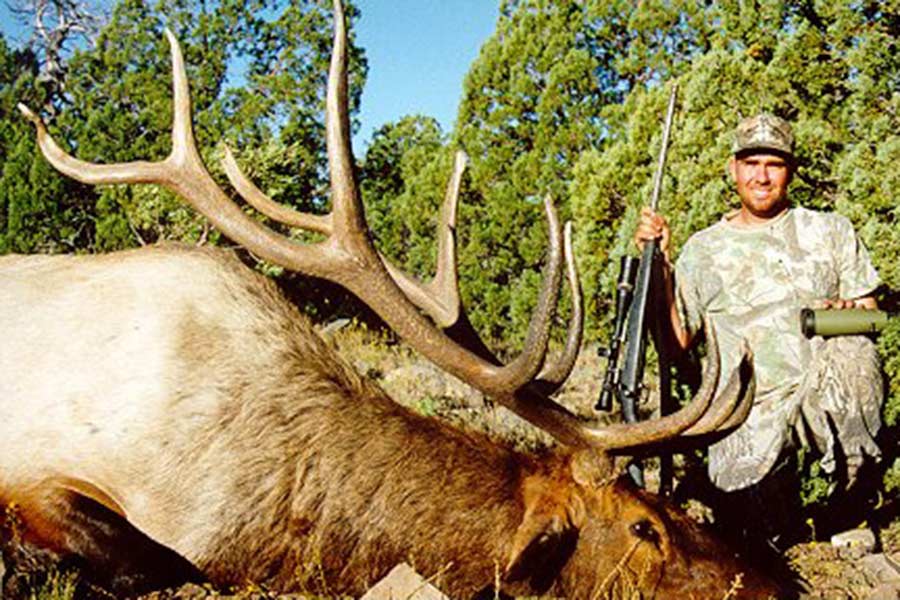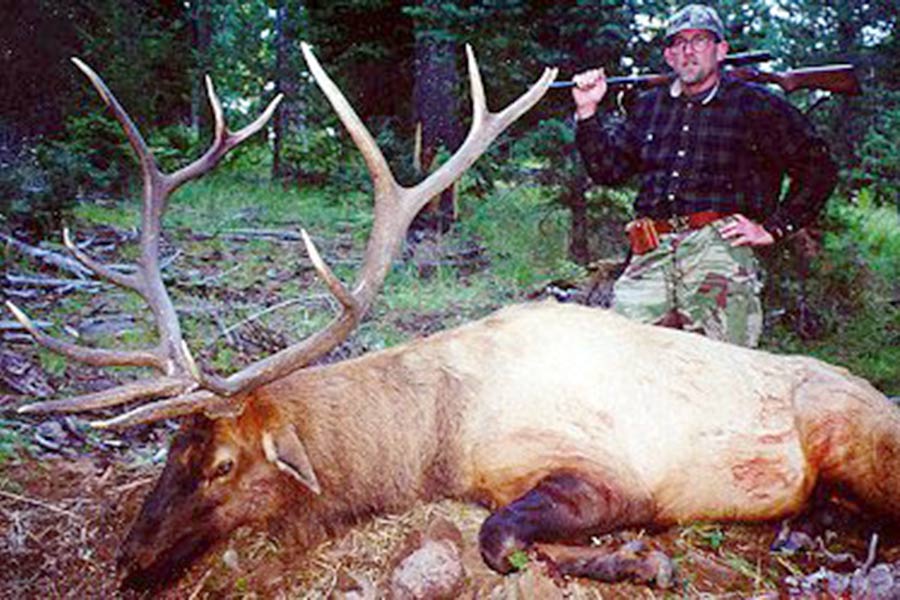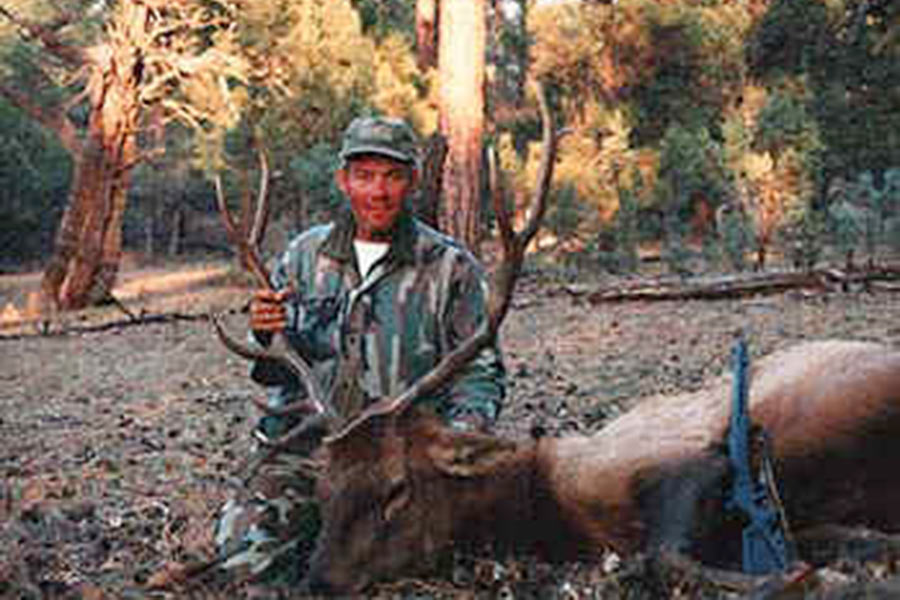Learn to hunt: muzzleloaders
Take on the challenge of using traditional hunting equipment
Levi Bassett
DNR Conservation Officer
The air is crisp, leaves are falling, and for many Utahns, the excitement of getting out into the field and hunting for big game hunts is contagious. As a former Utah Division of Wildlife Resources shooting sports coordinator, I've been lucky to instruct and train shooters and archers of all ages and abilities in using their equipment safely and ethically. While I love all styles of shooting sports and equipment, some of my favorite hunts have been when I'm out in the field with my muzzleloader.
Whether you have never hunted at all, or are an experienced rifle hunter looking for earlier season hunting opportunities, learning the unique skill set of muzzleloader hunting can be a fun and rewarding challenge. This is a great time of year to consider learning the unique skill of muzzleloader hunting as you prepare to apply for next year's hunts.
Here are some frequently asked questions about getting started with muzzy hunts.
Question: What's a muzzleloader?
Answer: According to Hunter-Ed.com, "muzzleloader is the term given to early firearms because they are loaded from the muzzle or open end." Muzzleloading firearms were common until the late 19th century, and they are now experiencing a resurgence as many hunters wish to reenact primitive, historical hunts, or take advantage of additional hunting opportunities.
Shown below are two of the most common types of muzzleloaders — an antique muzzleloading flintlock rifle and a more modern in-line muzzleloader.
Muzzleloading flintlock rifle
(Courtesy Hunter-Ed.com)
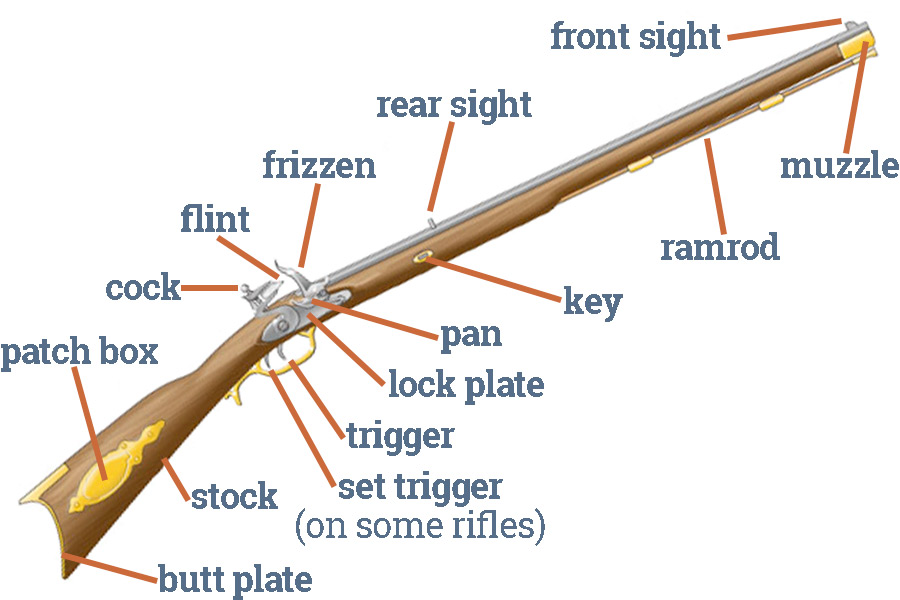
From Hunter-Ed.com: "In the in-line muzzleloader, either primer or a percussion cap is placed on the nipple or breech plug. An ignition system that is in direct alignment with the bore of the firearm causes the cap to ignite the black powder charge, and the gun fires."
In-line muzzleloader
(Courtesy Hunter-Ed.com)
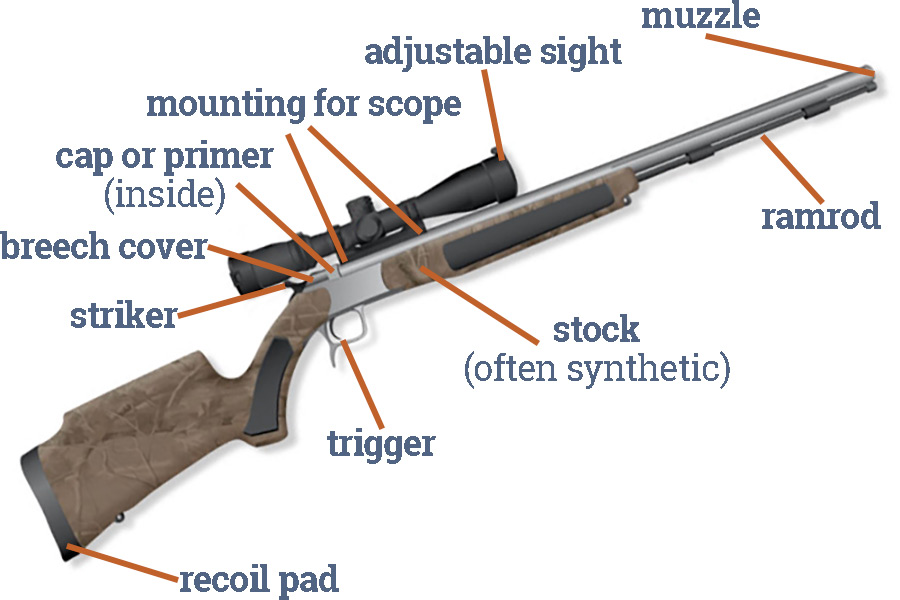
Q: What basic equipment does someone need to get started muzzleloader hunting?
A: The basics include:
- Muzzleloader
- Powder (muzzleloader specific, not smokeless)
- Powder measure
- Projectiles (round balls, sabots or bullets)
- Ignition source (caps, primers, etc.)
- Cleaning supplies (patches, solvent, etc.)
Most muzzleloaders are manufactured by reputable companies these days and are very reliable. Muzzleloader starter kit packages often include tools for loading, shooting and cleaning.
Q: What should someone look for when buying good, entry-level equipment?
A: If you are planning to hunt big game, remember to check the current-year Utah Big Game Field Regulations Guidebook section about muzzleloaders (pages 24–25) to make sure that your equipment is in line with Utah regulations.
While there are many rules regarding the type of muzzleloaders you can use to hunt in Utah listed in the guidebook, there are a few things to keep in mind when looking for equipment:
- A muzzleloader can have only one barrel, and the barrel must be at least 18 inches long.
- It must be loaded from the muzzle, and cannot be capable of firing more than once without being reloaded.
- The powder and bullet — or powder, sabot and bullet — cannot be bonded together as one unit for loading.
- The required bullet or sabot minimum grain size is listed in the guidebook and varies by the species you are hunting.
- If you are buying a muzzleloader package with optics, scopes stronger than 1× power are prohibited for all of Utah's muzzleloader hunts (limited-entry, general-season and management). Only open sights, peep sights, a red dot or scopes with 1× power or less are allowed on muzzleloaders during muzzleloader hunt seasons. (Scopes of any power are allowed on muzzleloaders during any-legal-weapon hunts.)
If you purchase a HAMSS (handgun-archery-muzzleloader-shotgun-straight walled rifle-only) deer or elk permit, additional rules and restrictions apply to using muzzleloaders. See the Utah Big Game Application Guidebook for more information about these unique hunting opportunities.
Q: How much does good entry-level equipment cost, and where can you buy the equipment?
A: You can purchase a good entry-level muzzleloader package for around $300–$400, which is a great deal to get you started. On top of that, the powder, projectiles and primers will cost about $100. You can purchase these packages or muzzleloaders at most sporting goods stores that sell firearms.
Q: What skills do you need to develop, and how/where can you practice?
A: Muzzleloader loading and shooting is a bit of an art that will take some practice learning. It's especially important that you carefully read the pamphlets/booklet from the muzzleloader you bought to determine what type of powder and how much of it is safe to use. (Powder must be specifically made for muzzleloaders, and for serious safety reasons do not use smokeless powder.) This information should also be available on the manufacturer's website.
Like learning any firearm skill, learning how to shoot muzzleloaders safely and accurately takes practice. We recommend going to a shooting range to get familiar with your muzzleloader, and a great place to go is one of the DWR shooting ranges. When you check in at the front counter, let them know that you are new to using a muzzleloader. If time allows, DWR staff or a range volunteer may be able to show you the basics and help you get started.
Q: What are the hunter education requirements for hunting with a muzzleloader?
A: Muzzleloader hunting has the same requirements to get started as any other hunting in Utah. If you have passed a Division-approved hunter education course and have a valid hunting or combination license, you can hunt with a muzzleloader.
Q: What species can you hunt with a muzzleloader in Utah? What's a good "first hunt"?
A: Traditionally, muzzleloader hunting is for big game. But some enthusiasts enjoy muzzleloader shotgun hunting for small game or game birds. Some great first muzzleloader hunts are our general-season deer or elk hunts.
One great thing about muzzleloader hunting is there are typically fewer hunters in the field during muzzleloader hunt seasons. Also, not as many hunters apply for these hunts (versus rifle hunts) so permits can be easier to draw in Utah's current system.
Q: How would a new hunter find training and/or a mentor?
A: Shooting ranges are a great place to find like-minded individuals. Don't be afraid to ask questions. Most people are willing to help if you need it. (Learn more about finding a mentor in this DWR blog post.)
Q: How do you care for your equipment to keep it in good condition?
A: There are two major rules when using a muzzleloader: Keep it dry and keep it clean. If the powder or primers get wet, they have a really hard time igniting. Keeping your powder in a dry, sealed container is best. Also, after you shoot a number of shots — every muzzleloader is different but most are between 4–10 shots — you will need to clean the bore. A simple patch with some black powder solvent works great. At the end of a season or session at the shooting range, you can take the muzzleloader apart for deep cleaning before storing it for the offseason.
Courtesy Hunter-Ed.com (View transcript)
Q: What's the single most important piece of advice you have for a new big game hunter?
A: Just pick a spot on the map, get a permit and go. You can only learn so much from asking and talking about it. At some point you just have to get out there and put the practice to work. Getting started can be the hardest part, but the lessons you will learn can increase your knowledge exponentially.
Q: Anything else you think is important for someone who's just getting started?
A: Hunting is hard to learn in just a year or two. It is a marathon, not a sprint. Think of it as a lifelong hobby that you will get a little bit better at every year. Sometimes success won't happen for many years, but when it does it will be that much more enjoyable.
Learn more
- Learn to hunt: shotguns
- Learn to hunt: finding a mentor
- Learn to hunt: archery
- The Youth Hunter Education Challenge is a fun annual competition where you can meet other hunters of all ages and skill levels. (Despite the name, YHEC is also open to adults!)
- WILD podcast episode: DWR shooting sports programs
